How the Columbus Crew climbed from near extinction to the top of American soccer
From the autumn of 2017 through the autumn of 2018, the Columbus Crew, known as “Major League Soccer’s first chartered franchise,” were the subject of an existential war that pitted a team owner against the city of Columbus and its hardheaded fans. The hardheads won. But there were scars.
The new president/general manager was Tim Bezbatchenko, who grew up in Westerville. When Bezbatchenko got the keys to the front office in January 2019, he found a skeleton staff at 1 Black and Gold Boulevard. Ahead, there was a new stadium and training facility to be planned and erected, an academy system to be reimagined and rebuilt and a raft of hires to be made. Winning seemed like an afterthought.
Within two years, the Crew won the 2020 MLS Cup in their old stadium by the state fairgrounds. In 2023, they won the MLS Cup in their new stadium in the Arena District. In January of this year, a sports-business website, Sportico.com, estimated the value of the Crew at $650 million — which ranked 13th of 29 MLS franchises and 42nd in the world of professional club soccer. The Haslam and Edwards families, who bought the Crew for $150 million at the end of 2018, have seen an explosion in equity in their successful team.
For a spell in mid-May, the Crew were the top-ranked club team in CONCACAF — the Confederation of North, Central America and Caribbean Association Football — ahead of Mexican-league powerhouses that have been around for 100 years.
This is the story of how an MLS original, located in a city that is considered the spiritual home of the United States Men's National Team, went from a near-death experience to the top of the hemisphere.
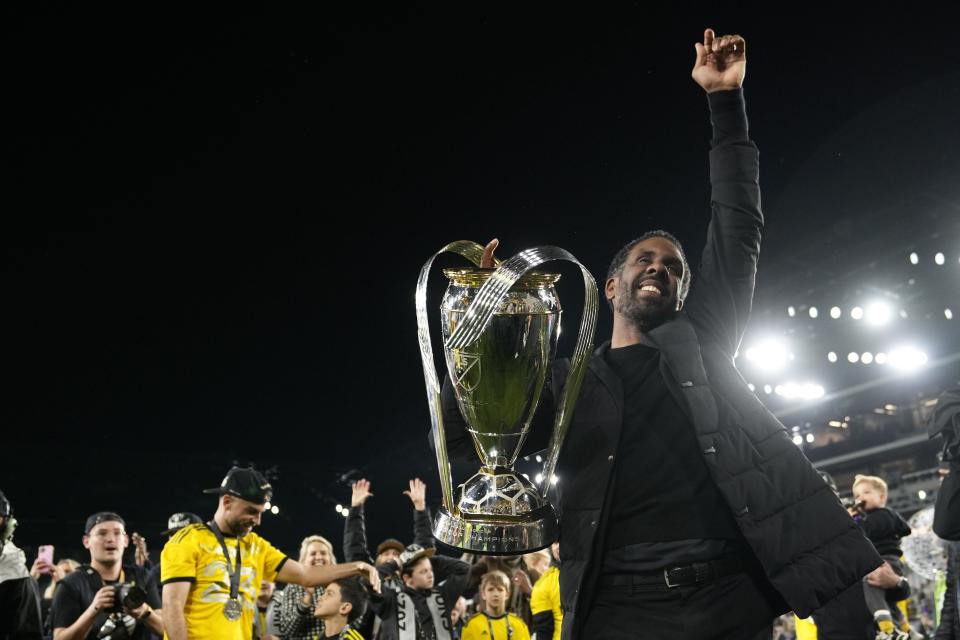
To understand the journey, one must be familiar with three terms:
“Massive,” with a capital “M,” which describes the Tao of the Crew.
#SaveTheCrew, an international calling card for a local grassroots movement.
And “Impossible is an opinion,” the phrase used by coach Wilfried Nancy to mark the next era.
'Massive' moment
The Crew were founded by one of the fathers of MLS, Lamar Hunt. He built Crew Stadium, the first modern, soccer-specific stadium in the country. It was a curiosity when it opened in 1999.
In a piece he wrote for The Dispatch in 2021, Brian Maisonneuve, a Crew player during the early years who now coaches at Ohio State, recalled the opening of Hunt's erector set of a stadium:
“It was something this country didn't have. Something the league didn't have. For us to be a part of it was special, and you felt the gravity of the moment. … At the time the stadium opened, you could see the potential in the league, but you knew the league hadn't taken off by any stretch. The future was still a big question mark.”
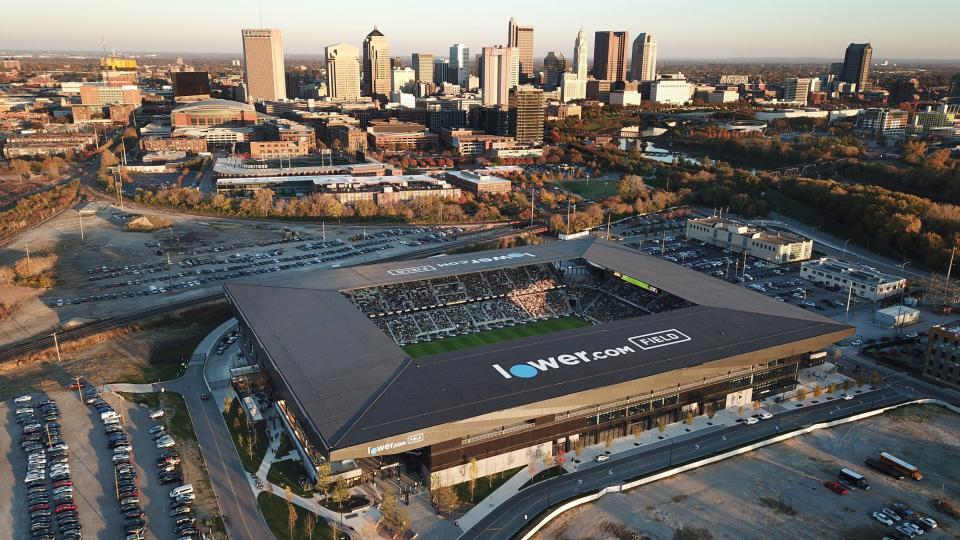
In 2001, the stadium became a beacon for the league when MLS faced bankruptcy, and it became the first friendly confines the USMNT ever knew.
On a frigid February night in 2001, the USMNT beat Mexico 2-0 before a crowd of 24,329 at Crew Stadium. The Mexican media called it “La Guerra Fria” (The Cold War). The U.S. Supporters would soon be adding another subtitle to the rivalry, “Dos a Cero.” Two to zero. It’s a chant: Over four World Cup cycles spanning 13 years, the USMNT beat Mexico 2-0 in Columbus. Only Hunt could have imagined such a thing.
Hunt died in 2006. Two years later, the Nordecke supporters’ section was organized and the term “Massive” was festooned on banners throughout the north corner of Crew Stadium. “Massive” meant to overcome everything and everyone, including your own management.
Dallas-based Hunt Sports Group, run by Hunt’s heirs, didn’t often show a personal presence in Columbus. And underpaid Crew players had to fight for basic amenities. For instance, when the players finally got the hot tub they needed at their outdated training facility, they had to chip in to pay for it. That was micro-Massive. Macro-Massive, as the fans perceived it, was that the league considered Columbus to be flyover territory and focused on larger markets. At the time, a Las Vegas group was pitching to buy the Crew.
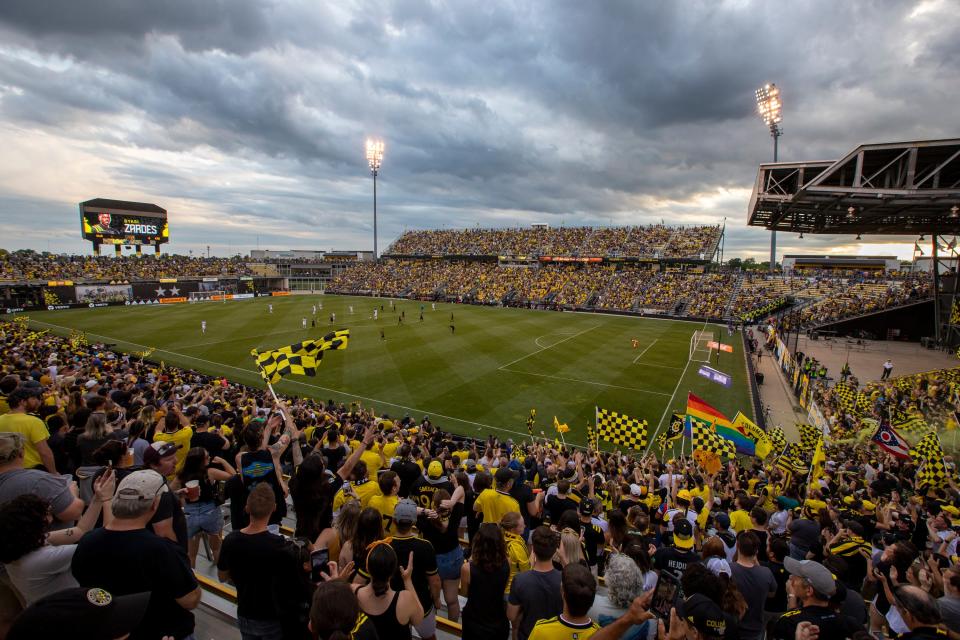
"The early days of the Nordecke were great," said Morgan Hughes, who worked on a veritable assembly line to create the artwork that appeared in the stands. "There was a sense that the sky was the limit, that we could make that corner of the stadium into anything we wanted it to be. It was one of those feelings you get when you start to realize that you didn't know you needed something until you had it. It was home."
In 2008, Hall-of-Fame coach Sigi Schmid led the Crew to a Supporters’ Shield, the hardware that goes to the team with the best regular-season record. Behind attacking midfielder Guillermo Barros Schelotto, they then beat Chicago in the Eastern Conference final and New York in the MLS Cup final, which was held in Los Angeles. Chants of “Massive, Massive” bellowed from the section of the stadium where the team's traveling party of supporters celebrated.
“Massive” is an ethos, and it was needed in the existential fight to come.
#SaveTheCrew movement begins
In the summer of 2013, Hunt Sports Group sold the Crew to Anthony Precourt, a hedge fund manager out of San Francisco. He was warmly received for two reasons: He was likely to spend more than the Hunts and, he insisted, he was committed to Columbus.
There was, however, nothing in writing to tie the team to the city. Instead, the sales agreement between Hunt Sports Group, MLS and Precourt contained a clause that stipulated Precourt could move the team to Austin. It came out later that Columbus city leaders had no idea such a clause existed. Nor were they aware that MLS had already registered “Austin FC” and “Austin Athletic” as league trademarks.
On Oct. 17, 2017, Precourt announced via a teleconference: Columbus’ “business metrics” did not work and he was "exploring" an option to move the team. That night, in a soccer bar in the Old North section of the city, a pity party turned into a grassroots movement that captured the imagination of soccer fans all over the world.
The movement began with a hashtag, #SaveTheCrew, and a slogan — “It’s not over. Tell everyone you know.” A week later, their first rally drew 2,000 to the steps of Columbus City Hall. A yearlong war was engaged.
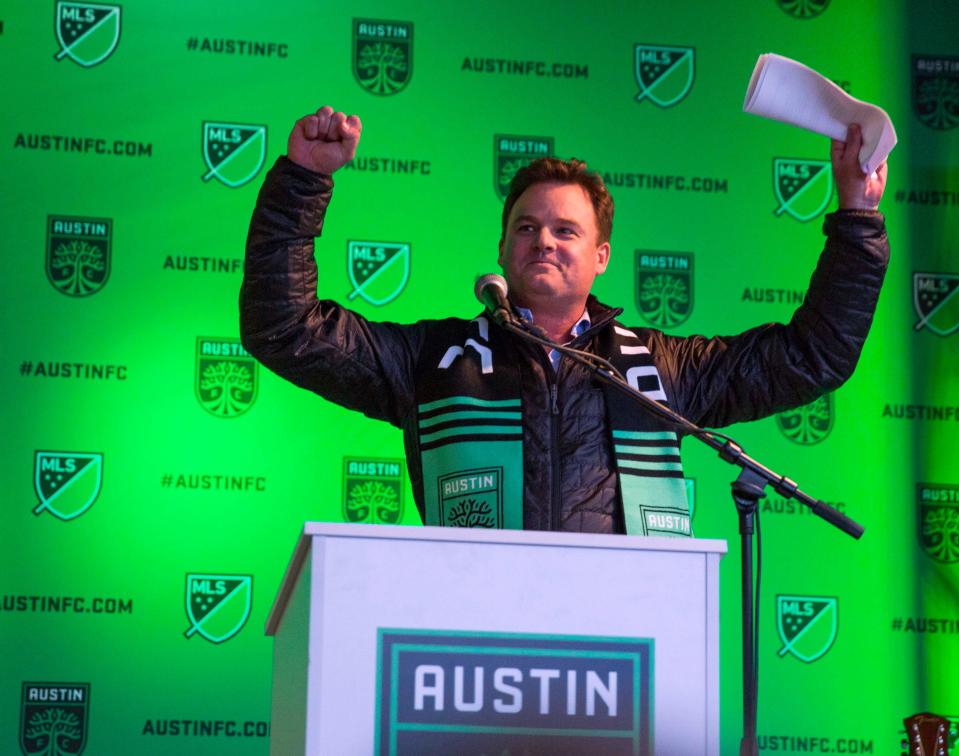
#SaveTheCrew’s apparatus had a dozen departments, everything from creative to finance to legal to youth outreach. Hundreds of volunteers and business partners were recruited. They used social media to spread their message, and virility ensued. Black and gold #SaveTheCrew caps, scarves and other paraphernalia popped up in Australia, England, Germany, Japan and at the World Cup in Russia.
Hughes was the spokesman for the group.
"The formation of STC was a whirlwind," Hughes said. "Everything was going 1,996 miles per hour at all times. My phone was ringing and pinging so much that I needed to charge it every hour and a half. People wanted desperately to help, and STC quickly became this umbrella to stand under while the storm raged around us. Eventually, there were so many of us, and there was so much talent and so much determination, that we became the storm."
In early 2018, Mike Duffey, a state representative from Westerville, dusted off Ohio Revised Code Section 9.67, otherwise known as the “Art Modell Law.” It was named for the NFL owner who moved the NFL's Cleveland Browns to Baltimore. It was enacted in 1996.
The Modell Law, in simple language: If you’ve accepted one penny from the city, county or state — for infrastructure improvements or anything else — you can’t move your team unless you come to an agreement with the relevant political authorities or you give the authorities six months to sell the franchise to local owners.
The state and the city used ORC 9.67 to sue Precourt Sports Ventures and MLS. The defendants worried that if the Modell Law was tested in court and the league lost, it might have repercussions. Imagine: What if every state had such a law? Wouldn’t the ability of billionaire owners to extort local authorities, not to mention relocate, be mitigated?
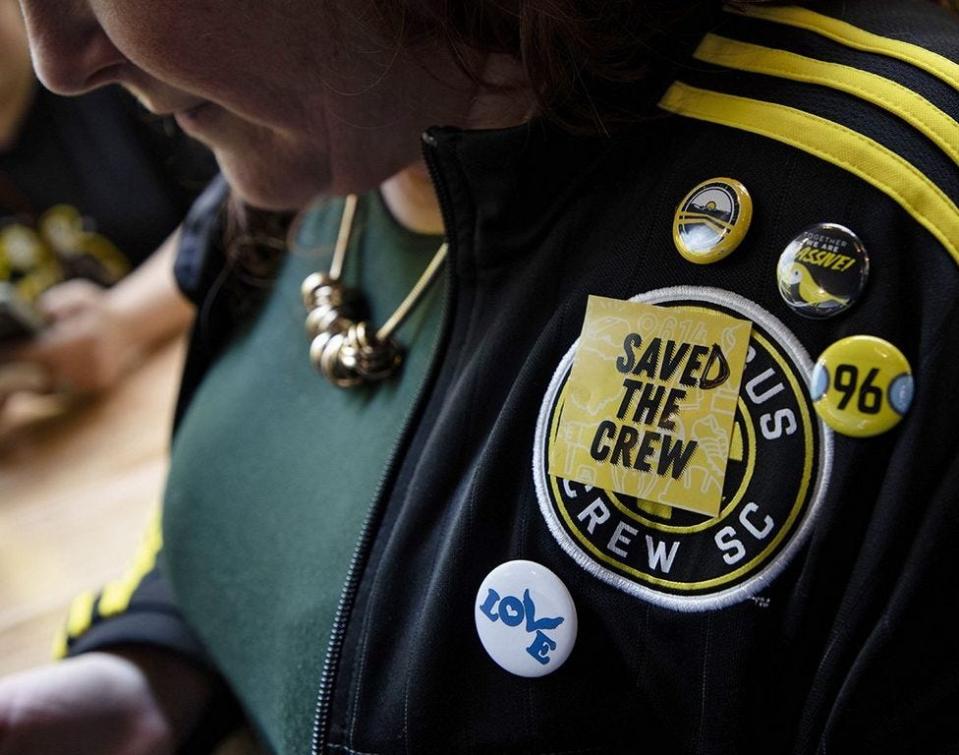
Behind the scenes, Alex Fischer, then-CEO of the Columbus Partnership, was working with Dr. Pete Edwards, the Crew’s team doctor since the franchise's founding. Fischer put Edwards and his family, which ran a venerable development business, together with Dee and Jimmy Haslam, owners of the Browns. The two families agreed to the intimidating terms that MLS slapped on the table: They paid $150 million — essentially, the expansion fee for Precourt’s team in Austin — and promised a new stadium would be built. It would require feats of state, county, city and private cooperation.
The unofficial announcement that the Crew had been saved was leaked by John Zidar, creative director for #SaveTheCrew, at 1:03 p.m. Oct. 12. Zidar tweeted, “SAVED THE CREW.” Within hours, it had more than 400,000 views, and Zidar had to turn off his phone because alerts kept draining his battery.
That night, Crew fans streamed to an impromptu gathering at Endeavor Brewing in Grandview. Dr. Pete, as he is familiarly known, was there. So were a few Crew players, including Josh Williams, who grew up in Akron rooting for the team he would eventually serve for a decade.
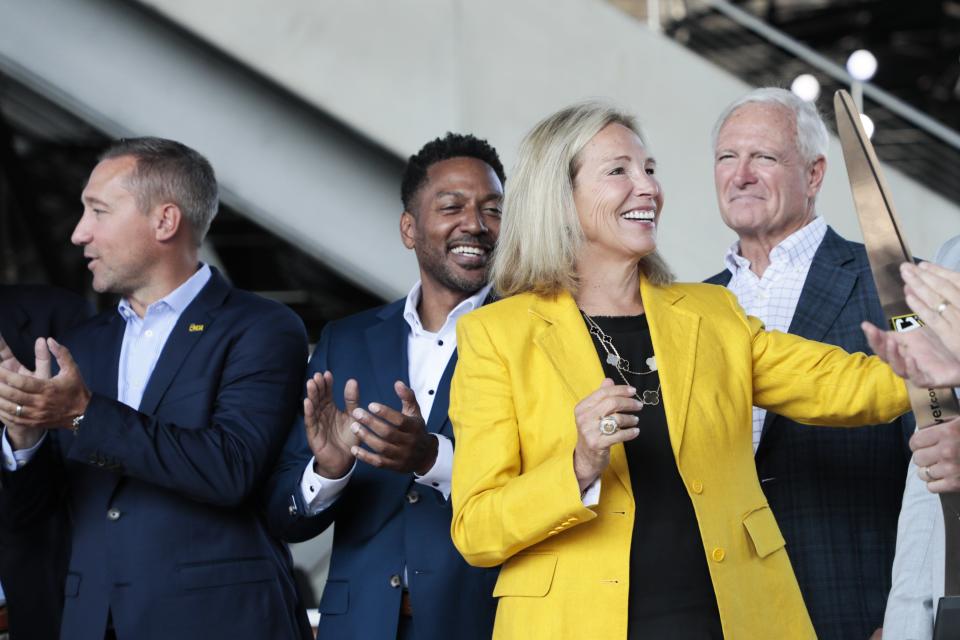
Asked about that night, Williams said, “I remember the excitement of getting a team and how it was all brand new. All those guys were larger than life to me — Brian McBride, Thomas Dooley, Brian Maisonneuve. …
"I didn’t follow European football, so they were like the Real Madrid of my world. I remember seeing all the U.S. games that came later. I just wanted to feel a part of it. I wanted to feel what was going on because it was unprecedented. Who saves a team? Nobody had ever done anything like that before.”
'Impossible is an opinion'
In the fall of 2020, Crew coach Caleb Porter took full advantage of a spasm of good fortune. At the end of a pandemic-shortened season, a string of playoff upsets gave the Crew a home-field path to the title game. Porter delivered an MLS Cup title with a rousing 3-0 upset victory over the Seattle Sounders in the old Crew Stadium.
The Crew had gone from life support to MLS champions. Alas, they missed the playoffs in 2021 and 2022, and Porter was fired.
Bezbatchenko knew exactly who should be the next coach — Wilfried Nancy of CF Montreal, who had his own ideas of how to approach the game (“with humility"), play the game (possess, attack, score-score-score) and develop players to fit his system (with heart and manic attention to detail).
The Crew led the league in goals scored (a franchise-record 67 in 34 games) and were a dark-horse contender as the 2023 playoffs neared. But they weren’t in the same league as their rival, FC Cincinnati, who won the Supporters’ Shield, or Los Angeles Football Club, the defending MLS Cup champion. The Crew won just four of 17 road games. Plus, they were so tuned to go forward, they’d be vulnerable on the back end in high-stakes games, right?
The Crew went on the road and beat second-seeded Orlando in the Eastern Conference semifinals. In the conference final, the Crew spotted Cincinnati two goals and looked cooked by halftime. In the second half, they ran Cincinnati off the field, tied the game up and won in extra time.
“It was a clinic of competitive spirit,” Nancy said.
A week later, the Crew handily defeated LAFC 2-1 in the MLS Cup championship game at Lower.com Field. Here was a team that a previous owner and the league tried to kill, that was saved by the fans and the team doctor, and after a few short years was standing astride the league.
The storyline continued to resonate through the 2024 CONCACAF Champions Cup tournament.
In April, the Crew traveled to Monterrey, Mexico, for the second leg of a quarterfinal series and beat Tigres UNAL on penalty kicks. It marked the first time an MLS team had beaten a Liga MX team on Mexican soil on kicks. On May 1, the Crew traveled back to Monterrey for the second leg of a semifinal series against CF Monterrey. The Crew won 3-1 in the second leg and 5-2 on aggregate.
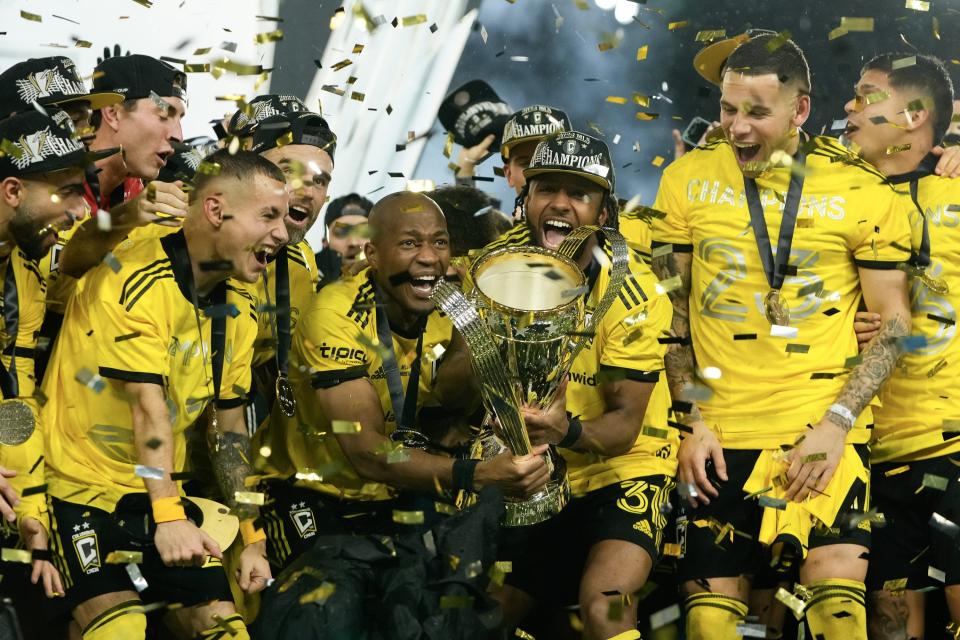
“We can be limitless,” Nancy said.
The Champions Cup final on June 1 was the biggest game on the grandest stage in Crew history. The Crew had to travel 2,000 miles to Pachuca, Mexico, and play at 8,000 feet above sea level. They were prepared for these vagaries, but they were not ready to be savaged by illness. Two days before the final, after eating a team meal at a Pachuca hotel, a few players began feeling sick. A day before the game, nearly the entire traveling party was feeling the effects of what was believed to be food poisoning. By the time the Crew took the field on June 1, more than half of their 23-man roster was violently ill and dehydrated.
Pachuca won 3-0.
Five days later, it was announced that Bezbatchenko, 42, had accepted a job as the first president of Black Knight Football Club, an enterprise that had under its umbrella Bournemouth of the English Premier League, FC Lorient of France’s Ligue 1, Hibernian FC of the Scottish Premiership and Auckland FC of New Zealand.
The #SaveTheCrew era of team history was at an end.
But what was built remains. Evidence of that is in the fact that the Crew will host this year's MLS All-Star Game. On July 24, the league's brightest stars will come to Lower.com Field and take on the best players of Liga MX.
And that's just part of #SaveTheCrew's legacy.
“The fans and the club are irreplaceable,” Bezbatchenko said. “The fans, the spirit, the Nordecke, the traditions — those things are irreplaceable. I learned very quickly in our business, everyone is replaceable. It doesn’t mean it’s difficult, or there aren’t legacies that are left. But the game moves very quickly.”
Bezbatchenko’s successor, Issa Tall seems well suited to writing the next chapter. He worked with Bezbatchenko at MLS headquarters and won Cups with Bezbatchenko in Toronto and Columbus. Tall has been groomed to succeed his mentor. He has also known Nancy for more than a decade and says they are sympatico.
The Champions Cup winner received an automatic bid to the 2025 FIFA Club World Cup. The bid is worth tens of millions of dollars. Since the U.S. will be the host country, CONCACAF/U.S. Soccer/MLS has an extra at-large bid, and it is likely that MLS commissioner Don Garber will be making the call.
What will his criteria be? Will the 2023 MLS Cup champions and 2024 Champions Cup runners-up get the bid? Or will he find a way to send Inter Miami and Lionel Messi, the darlings of Apple TV?
Will the 2024 MLS Cup champion get the bid?
“Massive” remains relevant.
Get more on the Crew by popping into our Speakeasy podcast
Get more Columbus Crew news by listening to our podcasts
This article originally appeared on The Columbus Dispatch: Columbus Crew: From near extinction to the top of US soccer

